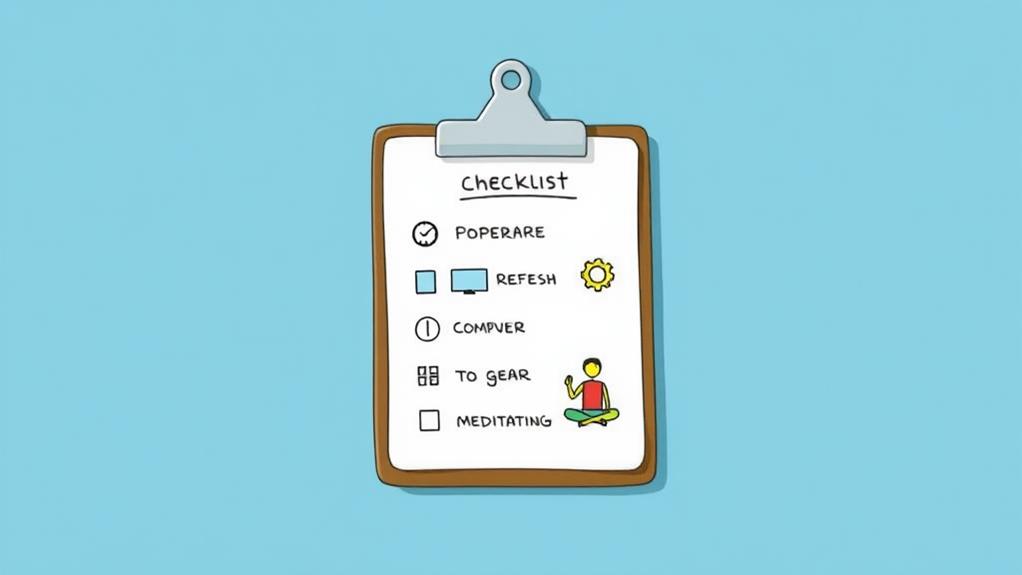Fixing Error 429, which means you've hit the server's request limit, is essential for seamless browsing. Start by clearing your browser cache to eliminate outdated files. Next, monitor your traffic patterns and reduce excessive requests, especially during peak times. You might also want to check your plugins and optimize your code to lower unnecessary calls to the server. If these steps don't help, consider contacting your hosting provider for guidance on traffic anomalies. By taking these actions, you can prevent future errors and keep your web experience smooth. More tips can help you manage this error effectively.
Understanding HTTP Error 429
HTTP Error 429, commonly known as "Too Many Requests," signals that you've hit the server's rate limit for incoming requests within a designated time frame.
This error often occurs in APIs and web applications as a protective measure against server overload. When you exceed the maximum number of requests allowed, the server temporarily blocks further attempts to maintain stability and fair usage among all users.
To prevent this issue, consider implementing performance optimization techniques that can reduce the frequency of requests and improve overall site efficiency.
You might encounter this error if you're making repeated access attempts, launching brute force attacks, or sending automated requests from bots.
The server's response to HTTP Error 429 may include a Retry-After header, which tells you how long to wait before trying again. This helps manage your request frequency and guarantees the server remains responsive to all users.
Understanding HTTP Error 429 is vital for anyone using web services or APIs. By recognizing this error, you can adjust your interaction with the server, monitor your request patterns, and optimize frequency.
Implementing caching strategies can also help minimize server load, reducing the likelihood of hitting that rate limit again.
Causes of Error 429
Error 429 usually pops up when you make too many requests in a short amount of time.
If you're using automated scripts or experiencing a sudden spike in traffic, you might hit those rate limits quickly.
Implementing effective site performance optimization strategies can help manage request frequency and server load effectively.
Understanding how excessive request frequency and resource limitations impact your server can help you avoid this frustrating issue.
Excessive Request Frequency
When multiple users access a website simultaneously, it can overwhelm the server's capacity, leading to a 429 error. This excessive request frequency is often triggered during peak traffic times, when the number of login attempts skyrockets, pushing your server beyond its limits.
If you're using a WordPress hosting provider, be aware that misconfigured plugins or scripts can inadvertently bombard the server with repeated requests, exacerbating the issue.
Automated bots and crawlers are another significant contributor to excessive requests. They can generate high-frequency access, making it even more likely you'll encounter a 429 error.
Third-party services that make frequent API calls can also push you over the edge if their request volume exceeds the limits set by your server.
To fix the error, consider deactivating your plugins temporarily to see if that alleviates the problem.
Monitoring your traffic and adjusting your settings with your hosting provider can also help manage excessive request frequency.
Resource Limitations Impact
Resource limitations imposed by hosting providers can greatly impact your website's performance, leading to the dreaded 429 error. When you're on shared hosting, multiple websites are vying for the same server resources. This competition can quickly result in denied requests, especially during high traffic spikes. If an influx of legitimate users or automated scripts hits your site, it might exceed the resource allocation, triggering HTTP Error 429.
Moreover, misconfigured server settings or inefficient code can generate excessive requests that surpass the defined limits. When your site experiences peak times, like during promotional events or when content goes viral, the risk of exceeding these limitations escalates. If this happens, your server may become overloaded, resulting in even more frequent 429 errors.
To mitigate the impact of resource limitations, consider upgrading your hosting plan or optimizing your website's code. By addressing these factors, you can reduce the likelihood of server overload and guarantee a smoother experience for your visitors.
Immediate Solutions

You can often resolve Error 429 quickly by implementing a few straightforward solutions.
Start by clearing your browsing data. This removes outdated cache files that could be causing the error and may also enhance your overall performance.
Additionally, consider implementing a strong password policy and enabling two-factor authentication to further secure your site against unauthorized access.
Once you've done that, it's crucial to monitor server response headers. This will give you specific rate limit information, helping you understand the number of requests you can make without triggering the error again.
If you're running a WordPress website, check your plugin settings and optimize your code to reduce unnecessary requests.
Verify that you only request data when absolutely necessary, as this minimizes server load and helps prevent the error from recurring.
If the error still persists, don't hesitate to contact your hosting provider.
They can assist you in identifying any traffic anomalies or server configuration issues that might be contributing to the problem.
Long-term Prevention Strategies
To prevent HTTP 429 errors in the long run, you'll want to monitor traffic patterns closely and optimize your server resources accordingly.
Implementing caching solutions can greatly reduce server load and enhance website performance, especially during peak traffic times, as discussed in caching plugins benefits.
By keeping an eye on usage trends, you can anticipate spikes and adjust your capacity to handle increased loads.
This proactive approach not only enhances performance but also keeps your users happy.
Monitor Traffic Patterns
Monitoring traffic patterns is essential for preventing Error 429 and ensuring a smooth user experience. To effectively manage your website's traffic and avoid excessive requests that can lead to this error, you need to implement a robust strategy.
Regularly analyzing traffic logs helps you identify unusual spikes that may indicate potential issues. Utilize analytics tools like Google Analytics to track user behavior and monitor request frequencies, ensuring you stay within rate limits.
Here are some key steps to help you monitor traffic patterns:
- Establish baseline traffic patterns during peak and off-peak hours.
- Analyze traffic logs to identify unusual spikes or patterns.
- Set up alerts for sudden increases in traffic from specific IP addresses.
- Use throttling techniques based on traffic analysis to control requests.
- Keep an eye on overall usage trends to spot anomalies early.
Optimize Server Resources
Optimizing server resources is crucial for maintaining stability and preventing Error 429 in the long run. Start by regularly monitoring server performance metrics like CPU and memory usage. This helps you identify resource bottlenecks and allocate resources based on traffic patterns effectively.
Implementing load balancing techniques can further distribute incoming requests evenly across multiple servers, reducing the chance of overload on any single server.
Consider using a Content Delivery Network (CDN) to cache and serve static resources closer to users. This not only mitigates server load but also improves response times considerably.
Additionally, take the time to optimize database queries and application code, minimizing resource-intensive operations. Efficient data retrieval and processing will help keep your server running smoothly.
If you notice that your traffic is consistently high and your resources are stretched, it might be time to upgrade your hosting plan. A dedicated hosting plan or VPS can provide you with more resources and greater control, accommodating higher traffic levels without triggering rate limits.
Taking these steps will guarantee your server remains robust and responsive in the face of increasing demand.
Troubleshooting for WordPress

When you encounter the HTTP error 429 in WordPress, it can be frustrating, but troubleshooting it doesn't have to be.
Start by systematically addressing potential causes. Here are some steps to help you resolve the issue:
– Deactivate plugins one by one to pinpoint any that might be generating excessive requests.
Additionally, verify that you're using strong passwords to protect your account, as weak passwords can lead to unauthorized access and increased requests.
- Temporarily switch to a default WordPress theme to rule out any theme-related problems contributing to the error.
- Implement caching solutions like caching plugins to lessen server load and minimize request frequency.
- Use plugins like WPS Hide Login to change the default login URL, reducing the risk of brute-force attacks that can trigger excessive login attempts.
- Monitor server performance and traffic sources through analytics tools to identify any unusual spikes or patterns leading to repeated requests.
Additional Resources and Support
Resolving HTTP error 429 is just the beginning; knowing where to find additional resources can further enhance your troubleshooting efforts. Start by utilizing the help centers and support documentation provided by your service providers. These resources often contain specific guidelines and troubleshooting steps tailored to managing the 429 error effectively.
Additionally, considering essential security measures for your website can help prevent future issues related to server overloads.
Engaging with community forums and discussion boards is another excellent way to gather insights. Users share their experiences and solutions, offering valuable information that might help you overcome the 429 error.
Additionally, regularly monitor updates and announcements from your API and service providers to stay informed about any changes to rate limits or server configurations.
You can also explore downloadable resources and eBooks focused on error management. These materials can deepen your understanding of handling request limits and provide strategies to minimize future issues.
If you continue facing persistent HTTP 429 problems, don't hesitate to reach out to technical support from your hosting provider. They can offer personalized assistance and insights tailored to your unique situation.
Conclusion
In closing, encountering HTTP Error 429 can be frustrating, but with the right strategies, you can overcome it. You might find it surprising how a few simple adjustments can keep those pesky requests in check. By understanding the causes and implementing both immediate and long-term solutions, you'll not only resolve the issue but also enhance your site's performance. Remember, the next time you run into this error, you're not alone—many face it, and now you know how to tackle it effectively!



